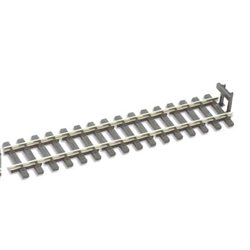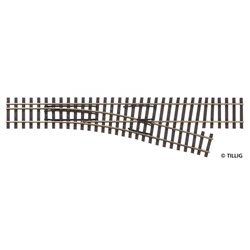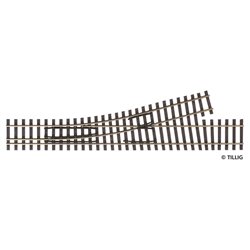The most common wood for baseboards is probably chipboard as this is relatively inexpensive. Plywood is another...
No products
Product successfully added to your shopping cart
There are 0 items in your cart. There is 1 item in your cart.
Search Tips
Christmas and New Year
We are dispatching orders every weekday apart from Christmas Day, Boxing Day and New Year's Day.
If you order is time critical, select next day delivery at checkout.
The shop in Sandown is closed from 25th December, reopening on 30th December.
What is the HOm scale?
The HOm scale is a popular narrow-gauge modelling scale used by enthusiasts to represent railways that are smaller than the standard gauge. This scale is particularly significant among hobbyists who are interested in capturing the charm and detail of narrow-gauge railway lines, which often served less accessible areas with lighter traffic.
The HOm scale operates at a ratio of 1:87, meaning that one unit on the model corresponds to 87 units in real life. This scale is closely aligned with the standard HO scale, which is widely used in model railways to represent standard-gauge trains. However, the key difference lies in the track gauge: the HOm scale uses a 12mm gauge, which is narrower than the standard HO scale's 16.5mm gauge, reflecting the reduced track width typical of narrow-gauge railways.
This 12mm gauge accurately represents the metre gauge in real life, which is used in many countries, including Switzerland, Germany, and parts of Africa and Asia. The metre gauge often finds its place in mountainous regions or rural areas where building full-sized tracks would be challenging or economically unfeasible. The HOm scale thus offers modellers a chance to explore these unique and often picturesque railway settings, capturing the distinctiveness of trains that traverse through challenging terrains.
In the UK, the HOm scale has found a niche following among modellers who appreciate the historical and operational nuances of narrow-gauge lines. British railway enthusiasts might use this scale to recreate scenes inspired by heritage railways or defunct lines that once served local communities. Narrow-gauge railways were once quite prevalent in certain parts of the UK, notably in Wales, where lines like the Ffestiniog Railway have become famous for their engineering ingenuity and scenic routes.
The appeal of the HOm scale is also tied to its compatibility with the popular HO scale buildings and accessories. This compatibility allows modellers to use existing HO scale scenery, structures, and figures, which are abundant and varied, offering a wide range of choices for creating realistic layouts. This can be particularly appealing to those who are starting out or wish to expand their collection without having to invest in entirely new equipment and materials.
Furthermore, the HOm scale supports a diverse array of rolling stock and locomotive models, many of which are produced by European manufacturers. Companies such as Bemo and Roco specialise in producing high-quality, detailed models that cater to this specific scale, often offering unique locomotives and carriages not found in standard-gauge modelling. This variety allows enthusiasts to model specific railway lines or recreate historical scenarios with a high degree of authenticity.
Overall, the HOm scale offers a distinct and richly rewarding experience for model railway enthusiasts, especially those captivated by the allure of narrow-gauge railways. It provides an opportunity to explore the unique operational challenges and scenic beauty associated with these lines, all while maintaining compatibility with the broader HO scale ecosystem. Whether one is interested in historical accuracy or simply the aesthetic charm of narrow-gauge railways, the HOm scale presents a versatile and engaging platform for creativity and exploration in model railway hobbying.
Click here to receive the tips weekly in your mailbox. You can unsubscribe at any time.










